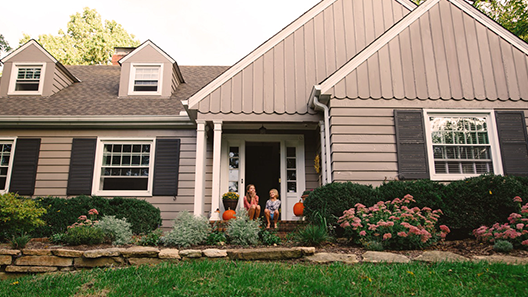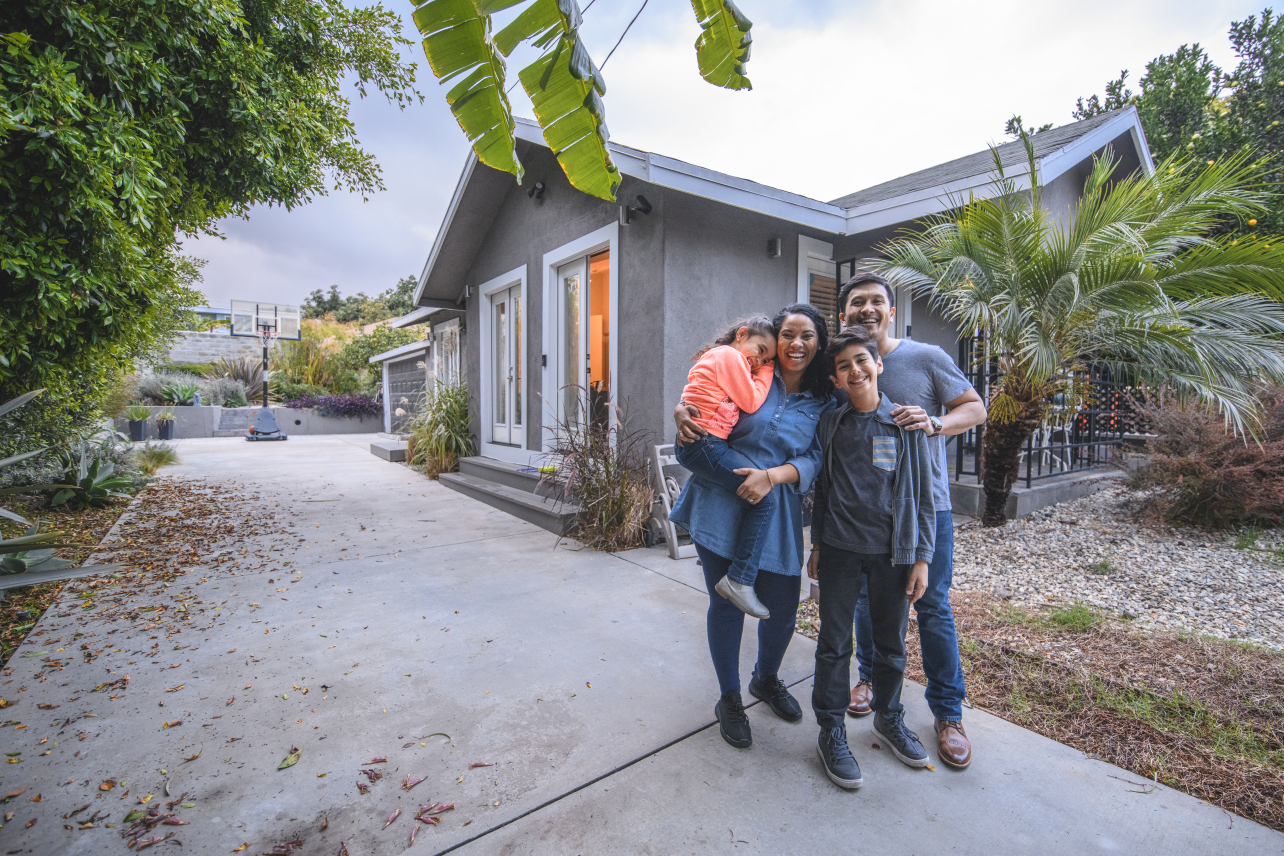For some homebuyers, changing interest rates might make it feel like the dream of homeownership is slipping out of reach. However, there is some good news. It’s possible to make buying a home in a changing interest-rate environment a reality while having a monthly payment you can comfortably afford. A way to achieve that is through a temporary mortgage buydown.
With this strategy, you’ll pay a higher amount upfront in exchange for a lower interest rate on your loan. There are two types of buydowns: permanent and temporary. It is important to understand the difference between the two before deciding if it is worth the extra expense.
Let’s take a look at what a buydown is, how it works, and whether it’s right for you.

Permanent vs. Temporary Buydowns
Permanent Buydowns: Permanent buydowns are the same as buying mortgage points. Mortgage points are the fees a borrower pays a mortgage lender in order to trim the interest rate on the loan, thus lowering the overall amount of interest they pay over the mortgage term. This practice is sometimes called “buying down the rate.” You pay additional costs, and the mortgage lender lowers the interest rate. One percentage point is $1,000 per $100,000 of the mortgaged amount and lowers the interest rate for the life of the loan.
Temporary Buydowns: Temporary buydowns lower the payment as if the interest rate was lower for the first 1 to 3 years, then the payment increases by 1% each year until it returns to the original closing payment amount. The most common temporary buydown terms are 3-2-1, 2-1, and 1-0, where the first number is the effective rate reduction you receive in the first year and the second number is the effective rate reduction for year two. With this option, your payment is lower at first but will increase over time.
If you are interested in a temporary mortgage buydown, there are a few things to keep in mind. The seller, builder, or lender can contribute to the subsidy cost needed to cover the difference in full versus discounted payment during the first one to three years of your mortgage. This translates to a temporary discount on your repayment amount, which may be one to three points depending on the terms of the buydown.
If a temporary mortgage buydown is the right strategy for you, there are various ways to pay for it. You can pay cash, ask the seller to pay, roll into your mortgage, use a builder closing cost incentive, or use gift funds. However, it is important to speak with your lender to explore all your options as some restrictions may apply.
How Temporary Buydowns Are Structured
Temporary Buydowns are typically referred to with a series of numbers that indicate their structure and term.
- 1-0 Buydown: The payment is lowered as if the interest rate was lowered by 1 percentage point for the first year of the loan.
- 2-1 Buydown: The payment is lowered as if the interest rate was lowered by 2 percentage points for the first year of the loan, then 1 percentage point for the second year.
- 3-2-1 Buydown: The payment is lowered as if the interest rate was lowered by 3 percentage points for the first year of the loan, 2 percentage points for the second year, and 1 percentage point for the third.
Regardless of the structure, the payment returns to its original level when the buydown term ends.
1-0 Buydown
With a 1-0 buydown, your payment is reduced for the first year in an amount representing a rate that is 1% lower than your contract rate. Here's what that looks like for a 30-year fixed with a $350,000 loan amount at a contract rate of 7% (7.00% APR) interest.
Review the chart below to see how this buydown would affect a buyer’s monthly mortgage payments.
| Year | Monthly Payment | Monthly Savings | Annual Savings |
| 1 | $2,098 | $230 | $2,760 |
| 2 – 30 | $2,329 | $0 | $0 |
A temporary buydown reduces the monthly payment as if the initial rate was 1% lower in the first year. The payment returns to the repayment amount under the note after buydown period. For example, a 1-0 buydown Conventional 30-year fixed rate loan with a purchase price of $350,000, down payment of 20%, and an annual percentage rate of 7% (7.00% APR) would result in a payment of $2,098 (which is that same as an interest rate of 6% (6.00% APR)) for the first year, and the payment will be $2,329 after the first year (which is the normal monthly payment at 7% (7.00% APR)) at cost of 0 points paid at closing. The monthly payment of $2,329 for the second year will continue for the life of the loan thereafter.
2-1 Buydown
In the 2-1 buydown, your payment is reduced for the first year in an amount representing a rate that is 2% lower than your contract rate. In the second year, your payment is reduced to an amount representing a rate that is 1% lower than your contract rate. Then, in the third year, the payment returns to the full payment amount which will be the same for the rest of the loan term.
Review the chart below to see how this buydown would affect a buyer’s monthly mortgage payments.
| Year | Monthly Payment | Monthly Savings | Annual Savings |
| 1 | $1,879 | $450 | $5,400 |
| 2 | $2,098 | $230 | $2,760 |
| 3-30 | $2,329 | $0 | $0 |
A temporary buydown reduces the monthly payment as if the initial rate was 2% lower in the first year and 1% lower in the second year. The payment returns to the repayment amount under the note after buydown period. For example, a 2-1 buydown Conventional 30-year fixed rate loan with a purchase price of $350,000, down payment of 20%, and an annual percentage rate of 7% (7.00% APR) would result in a payment of $1,879 (which is that same as an interest rate of 5% (5.00% APR)) for the first year, a payment of $2,098 for the second year (which is the same as an interest rate of 6% (6.00% APR)), and $2,329 for the third year (which is the normal monthly payment at 7% (7.00% APR)) at cost of 0 points paid at closing. The monthly P&I payment of $2,329 for the third year will continue for the life of the loan thereafter.
3-2-1 Buydown
A 3-2-1 buydown is a temporary payment reduction where your payment starts low and increases incrementally for the first three years. In the first year, your payment is reduced to an amount representing a rate that is 3% lower than your contract rate. In the second year, your payment is reduced to an amount representing a rate that is 2% lower than your contract rate. In the third year, your payment is reduced to an amount representing a rate that is 1% lower than your contract rate. Then, in the fourth year, the payment rate returns to the full payment amount and will stay the same for the remainder of the loan term.
Review the chart below to see how this buydown would affect a buyer’s monthly mortgage payments.
| Year | Monthly Payment | Monthly Savings | Annual Savings |
| 1 | $1,671 | $658 | $7,896 |
| 2 | $1,879 | $450 | $5,400 |
| 3 | $2,098 | $230 | $2,760 |
| 4-30 | $2,329 | $0 | $0 |
A temporary buydown reduces the monthly payment as if the initial rate was 3% lower in the first year, 2% lower in the second year and 1% lower in the third year. The payment returns to the repayment amount under the note after buydown period. For example, a 3-2-1 buydown Conventional 30-year fixed rate loan with a purchase price of $350,000, down payment of 20%, and an annual percentage rate of 7% (7.00% APR) would result in a payment of $1,671 (which is the same as an interest rate of 4% (4.00% APR)) for the first year, a payment of $1,879 for the second year (which is the same as an interest rate of 5% (5.00% APR)), a payment of $2,098 for the third year (which is the same as an interest rate of 6% (6.00% APR)), and a payment of $2,329 for the fourth year (which is the normal monthly payment at 7% (7.00% APR)) at cost of 0 points paid at closing. The monthly payment of $2,329 for the fourth year will continue for the life of the loan thereafter.
Newrez Knows Buydowns
While mortgage buydown can be a useful strategy for homebuyers in a changing interest-rate environment, you should consult a lender, as some restrictions apply. Buydowns are only eligible when purchasing or refinancing primary residences and second homes.
Newrez offers over 123 Temporary Buydown Mortgage options across a wide variety of product suites, including Fannie Mae®, Freddie Mac®, FHA, VA, USDA, and our Smart Series programs that will cover homebuyers' unique needs.
Interested in exploring money-saving options with your mortgage? Contact us today!
Fannie Mae® is a registered trademark of the Federal National Mortgage Association and Freddie Mac® is a registered trademark of the Federal Home Loan Mortgage Corporation. Neither are affiliated with Newrez LLC.
This is not a commitment to lend or the guarantee of a specified interest rate. All loan programs and availability of cash proceeds are subject to credit, underwriting, and property approval. Programs, rates, terms and conditions are subject to change without notice. Other restrictions apply.



